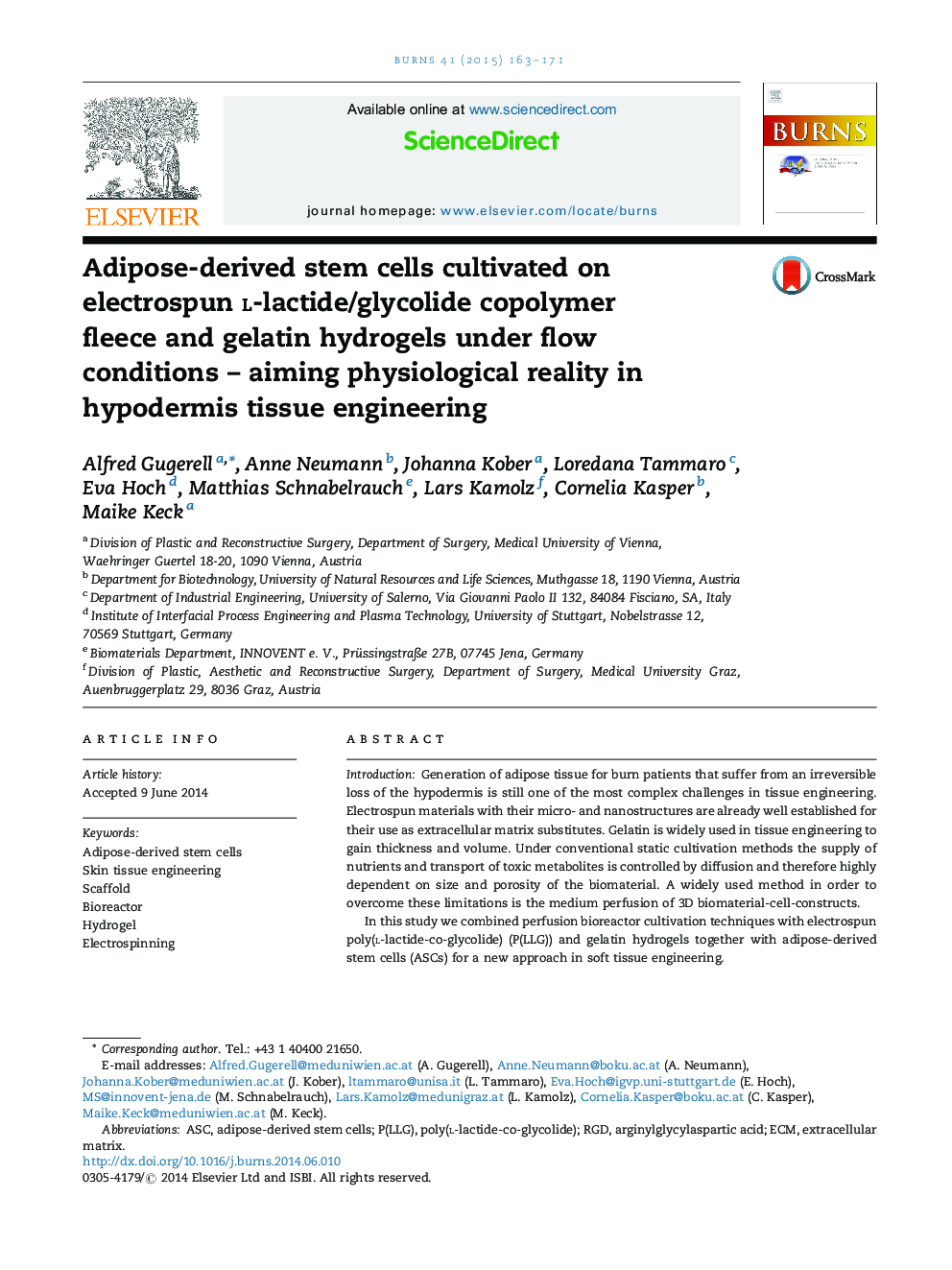| کد مقاله | کد نشریه | سال انتشار | مقاله انگلیسی | نسخه تمام متن |
|---|---|---|---|---|
| 3104229 | 1191645 | 2015 | 9 صفحه PDF | دانلود رایگان |

IntroductionGeneration of adipose tissue for burn patients that suffer from an irreversible loss of the hypodermis is still one of the most complex challenges in tissue engineering. Electrospun materials with their micro- and nanostructures are already well established for their use as extracellular matrix substitutes. Gelatin is widely used in tissue engineering to gain thickness and volume. Under conventional static cultivation methods the supply of nutrients and transport of toxic metabolites is controlled by diffusion and therefore highly dependent on size and porosity of the biomaterial. A widely used method in order to overcome these limitations is the medium perfusion of 3D biomaterial-cell-constructs.In this study we combined perfusion bioreactor cultivation techniques with electrospun poly(l-lactide-co-glycolide) (P(LLG)) and gelatin hydrogels together with adipose-derived stem cells (ASCs) for a new approach in soft tissue engineering.MethodsASCs were seeded on P(LLG) scaffolds and in gelatin hydrogels and cultivated for 24 hours under static conditions. Thereafter, biomaterials were cultivated under static conditions or in a bioreactor system for three, nine or twelve days with a medium flow of 0.3 ml/min. Viability, morphology and differentiation of cells was monitored.ResultsASCs seeded on P(LLG) scaffolds had a physiological morphology and good viability and were able to migrate from one electrospun scaffold to another under flow conditions but not migrate through the mesh. Differentiated ASCs showed lipid droplet formations after 21 days. Cells in hydrogels were viable but showed rounded morphology. Under flow conditions, morphology of cells was more diffuse.DiscussionASCs could be cultivated on P(LLG) scaffolds and in gelatin hydrogels under flow conditions and showed good cell viability as well as the potential to differentiate. These results should be a next step to a physiological three-dimensional construct for soft tissue engineering and regeneration.
Journal: Burns - Volume 41, Issue 1, February 2015, Pages 163–171